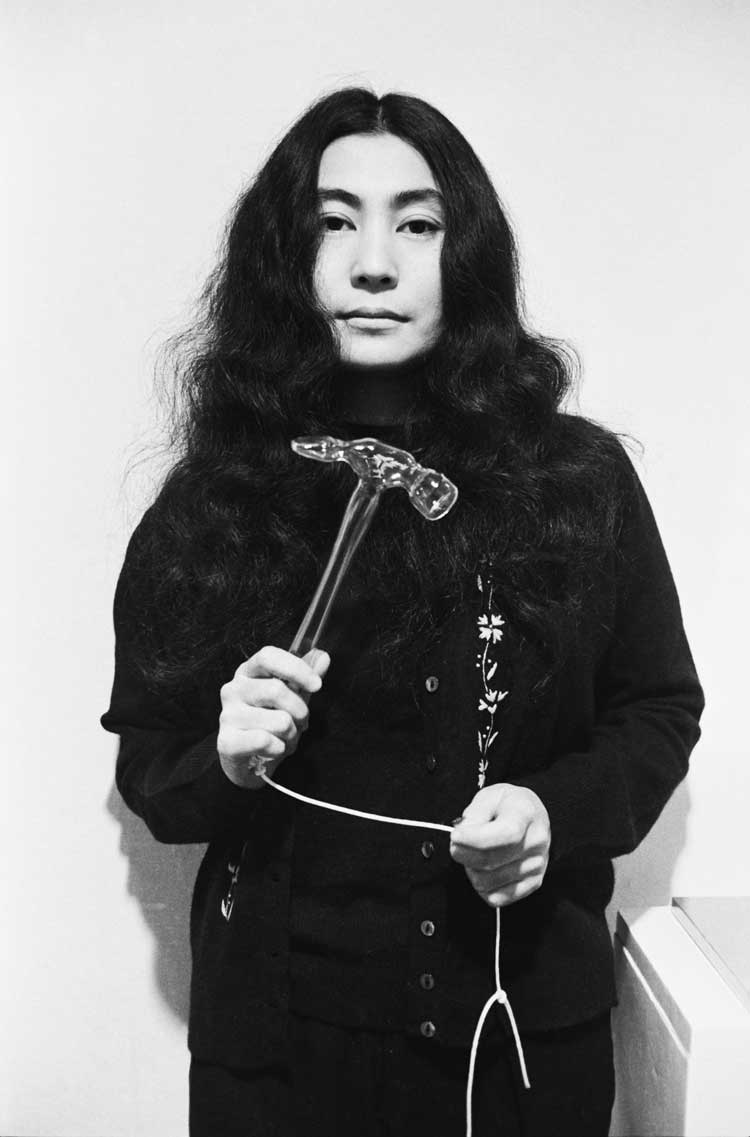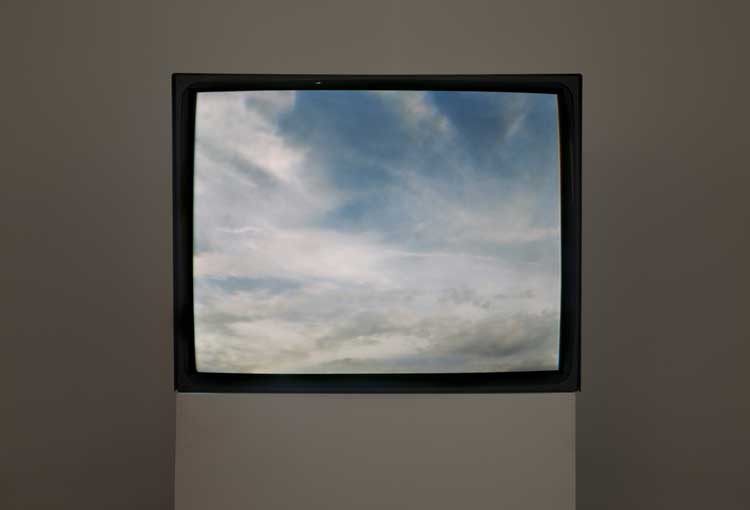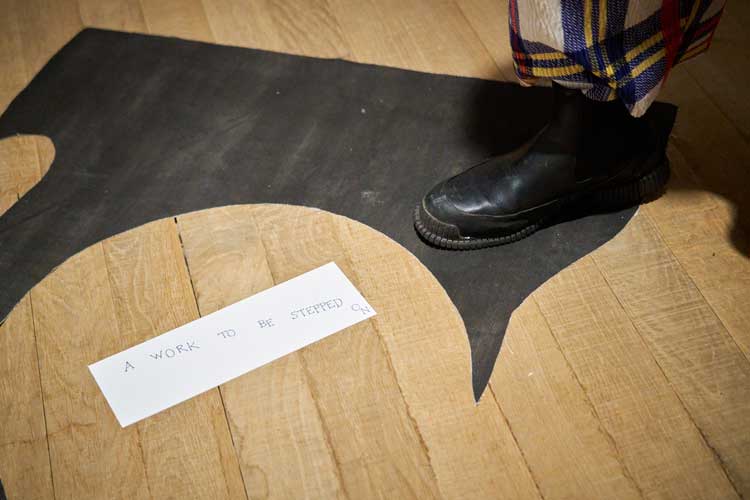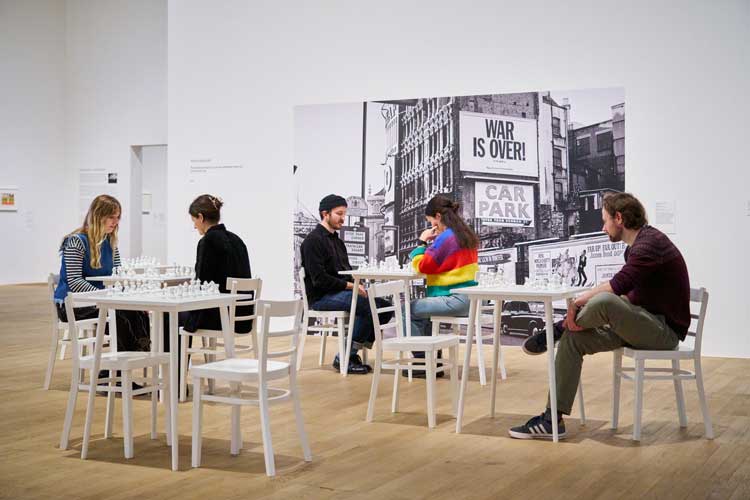-(2).jpg)
Yoko Ono, Add Colour (Refugee Boat), concept 1960, installed in Yoko Ono: Music of the Mind, Tate Modern, London, 2024. Photo: © Tate/Reece Straw.
Tate Modern, London
15 February – 1 September 2024
by BETH WILLIAMSON
Yoko Ono (b1933) has been one of the most iconic names in global art and activism spanning the seven decades since 1955. Her groundbreaking work in early conceptual and participatory art, film and performance, as well as her work as a musician and notable campaigner for peace is unparalleled in almost every respect. With more than 200 works, including instruction pieces and scores, music, film, installation and photography, this exhibition interrogates the artist’s approach to art, participation and language, an approach that still resonates strongly today. Set to be a blockbuster from the moment of its opening, the exhibition was sold out on the day I visited and packed with visitors clearly stimulated by the work’s variously poetic, funny and philosophical approaches. Well known for her anti-war stance and world peace campaigning, Ono’s convictions feel more prescient than ever in the contemporary climate. Her appetite for experimentation and risk-taking is mind-boggling and only becomes more so with every work encountered. The exhibition certainly plays to her desire to stimulate the imagination, taking its title from her comment: “The only sound that exists to me is the sound of the mind. My works are only to induce music of the mind in people … in the mind-world, things spread out and go beyond time.”

Yoko Ono with Glass Hammer 1967 from HALF-A-WIND SHOW, Lisson Gallery, London, 1967. Photo: © Clay Perry.
The very first work in this exhibition is Lighting Piece (1955). Ono’s instruction is to simply light a match and watch until it goes out. The childhood origins of this piece are interesting in themselves since Ono was extremely sensitive to sound, hiding in the dark and blocking her ears to close off ambient sounds. She repeatedly lit a match and watched it burn out while the sounds in her mind quietened. Although the concept for the work dates to 1955, it wasn’t printed until c1963-64 when it appeared in her book Grapefruit (1964). Every aspect of the development of this concept is explored as the instruction is accompanied by an associated film, Film No 1 (Match) / Fluxfilm No14 (1966), which captures the flame of a match flickering to a stop in slow motion. Further, a series of photographs show Ono performing Lighting Piece in 1962, for an audience at Works of Yoko Ono in the Sogetsu Art Center in Tokyo. She said: “I wanted most things to be performed in the dark, thereby asking the audience to stretch their imaginations.” To explore a single small concept in ways that result in such a variety of work that still engages audiences decades later is a phenomenal achievement.

Yoko Ono, Sky TV 1966/2014. Courtesy the artist. Installation view courtesy of Hirshhorn Museum and Sculpture Garden. Photo: © Cathy Carver.
As a young child fleeing Tokyo during the second world war, Ono found comfort in the constant presence of the sky and it is a recurring theme in her work and a metaphor for freedom and limitlessness. It is something else that she explores in myriad ways, including the instruction piece Painting to See the Skies (1961). The installation SKY TV (1966) is once again realised in this exhibition, showing a live feed of the sky above Tate Modern.
.jpg)
Yoko Ono, Helmets (Pieces of Sky), 2001, installation view, Yoko Ono: Music of the Mind, Tate Modern, London, 2024. Photo: © Tate/Lucy Green.
Helmets (Pieces of Sky), first realised in 2001, invites visitors to take their own puzzle-piece of sky from one of many upturned military helmets suspended from the ceiling. Even though the puzzle pieces are dispersed randomly, they remain designed to come together suggesting the possibility of completeness, hope and peace.

Yoko Ono, Painting to be Stepped On, 1961, installation view, Yoko Ono: Music of the Mind, Tate Modern, London, 2024. Photo: © Tate/Reece Straw.
The invitation for audiences to participate in Ono’s work is present almost from the beginning of her practice. A series of instructional paintings and drawings shown at AG Gallery in New York in 1961 – Ono’s first solo exhibition – invites the audience to complete a painting. Tate Modern audiences are invited to engage with a recreation of Painting to Be Stepped On (1960/61).
.jpg)
Yoko Ono, Bag Piece, 1964, installation view, Yoko Ono: Music of the Mind, Tate Modern, London, 2024. Photo: © Tate/Lucy Green.
Elsewhere in this exhibition is Bag Piece (1964), an opportunity for visitors to climb inside a black cloth bag and become what Ono described as “just a spirit or a soul”. Unfinished paintings or objects require audience members to complete them, by, for example, hammering a nail into board. There are all-white chess sets on all-white boards for visitors who are instructed to “play as long as you can remember where your pieces are”. White Chess Set demonstrates Ono’s anti-war stance and was first realised in 1966.

Yoko Ono, White Chess Set, 1966, installation view, Yoko Ono: Music of the Mind, Tate Modern, London, 2024. Photo: © Tate/Reece Straw.
One of the most popular pieces in this exhibition is Add Colour (Refugee Boat) conceived in 1960. In this iteration, visitors are invited to add colour to the initially all-white room and boat. The artist’s instruction for this collective participatory work is: “Just blue like the ocean.” Visitors are invited to contribute their hopes and beliefs in blue and white and to reflect on the impact that collective action might have. It is an ode to the possibility of peace, something that has been a constant in everything Ono does.
Some of her best-known work campaigning for peace was made in collaboration with her late husband, John Lennon, with three pieces made in 1969. The couple sent Acorns for Peace to world leaders. In a billboard campaign, “War is Over! (if you want it)”, a message of peace is conveyed through the language of advertising. Bed Peace saw the couple’s notorious “bed-in” events in Amsterdam and Montreal, where they spoke to the media to promote world peace in the midst of the Vietnam war. Twenty-five years later, in 1983, Ono placed an advertisement in the form of an article in the New York Times. It was titled Surrender to Peace. Still, Ono maintains her desire to heal the self and the world, and share her message of world peace. It is a laudable ambition by any measure and this exhibition makes you wonder if it might just be possible.